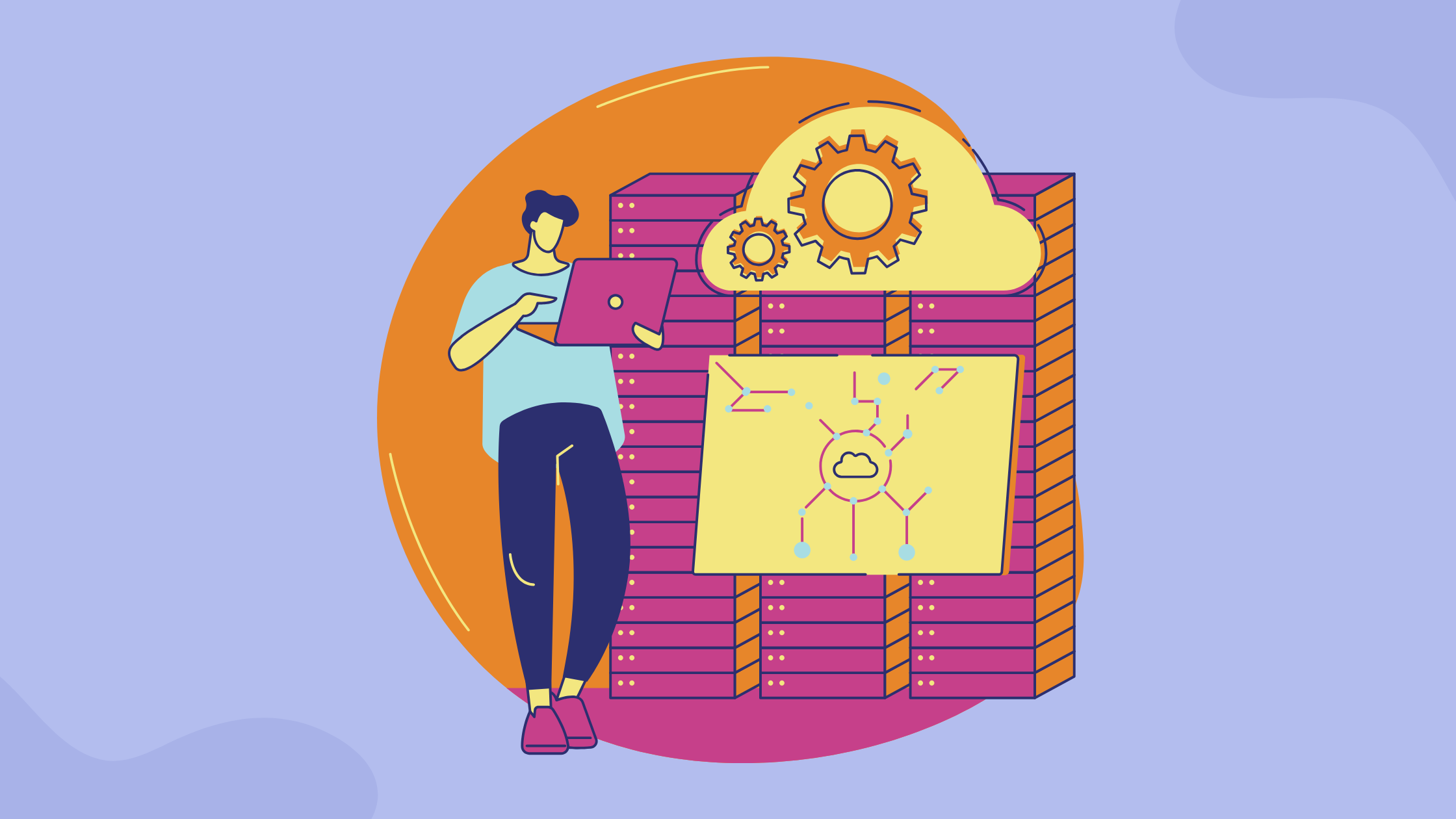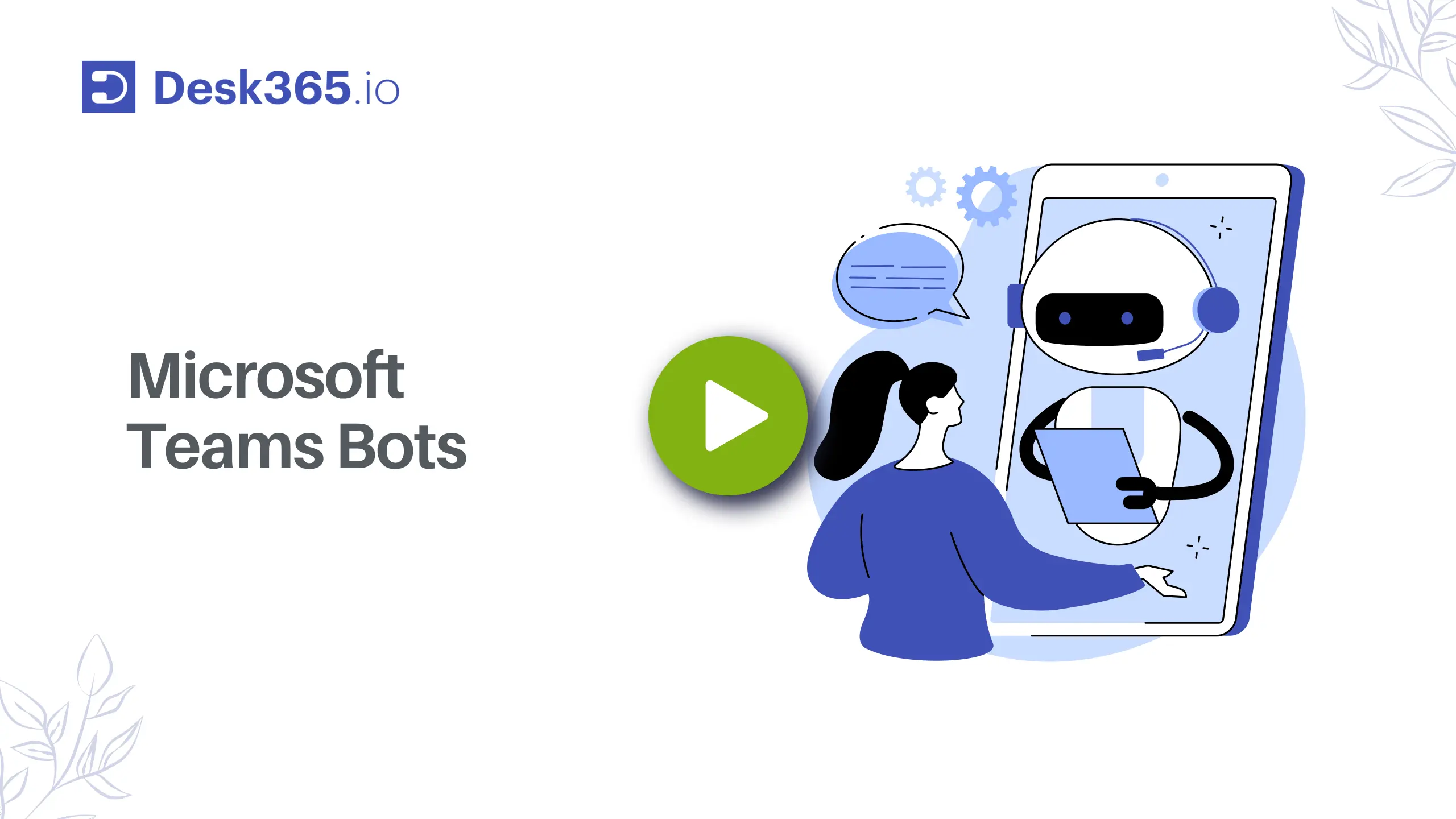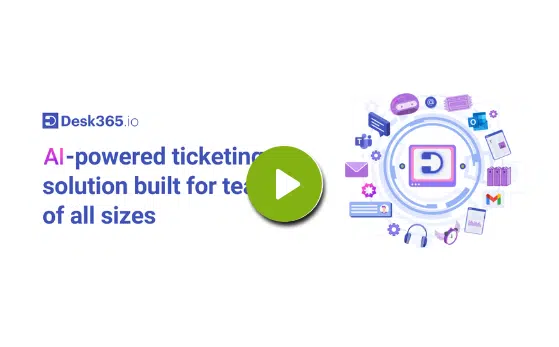A helpdesk software is designed to assist both employees within a company and external users, such as customers. A cloud-based helpdesk takes this functionality to the next level by revolutionizing how businesses manage customer inquiries. It allows companies to respond quickly to customer queries, track and resolve issues efficiently, and automate repetitive tasks—all without the need for complicated on-site hardware or IT management.
With a cloud-based helpdesk, businesses can provide 24/7 customer support, ensuring that assistance is always available. These systems are user-friendly, cost-effective, and equipped with tools like a ticketing system, self-service portals, automation features, and reporting capabilities. This means businesses can improve their customer service experience and operate more efficiently.
What is a cloud-based helpdesk?
A cloud-based helpdesk is an internet-based customer support solution that leverages cloud computing technology to manage and resolve customer issues and service requests efficiently.
Unlike traditional on-premise systems that require local infrastructure and ongoing maintenance, cloud-based helpdesks are hosted on remote servers managed by third-party providers. A well-defined cloud security architect ensures these remote systems are built securely and resistant to vulnerabilities.
This eliminates the need for costly hardware and IT resources, making it a cost-effective and scalable option for businesses of all sizes.
These systems provide tools to streamline communication, track customer requests, automate responses, and share helpful resources like knowledge base articles. Accessible from any location with an internet connection, cloud-based helpdesks are particularly well-suited for remote or hybrid work environments.
By adopting this modern solution, businesses can enhance their customer service operations, reduce costs, and improve overall efficiency while focusing on delivering a seamless support experience.
Why choose a cloud-based helpdesk?
Moving to a cloud-based helpdesk isn’t just a trend—it’s a practical step forward for any business looking to improve customer support while saving on operational costs. It simplifies the customer service process, boosts team productivity, and ensures customers receive fast, reliable support every time. Let’s explore the main reasons why your business needs a cloud-based helpdesk ticketing system.
Simplified ticket management
With a cloud-based helpdesk, support tickets can be created effortlessly from various channels such as email, chat, or web forms. This omni-channel approach ensures that customers can reach out using their preferred method. Once created, tickets are automatically categorized and prioritized based on their urgency or type, allowing support teams to respond quickly and efficiently. By streamlining ticket management, businesses can reduce customer wait times and help their teams stay organized and productive.
Automated processes
Routine tasks can often bog down support teams, but automation changes the game. By automating repetitive processes such as ticket assignment, follow-ups, and reminders, cloud-based helpdesks minimize the risk of human errors. This not only saves time but also ensures tasks are completed consistently. With automation handling the mundane, support agents can dedicate their efforts to resolving complex issues that require a human touch.
Recommended Reading: How does Ticket Routing help in Customer Service?
Advanced AI-powered features
Modern helpdesks leverage AI tools to make customer support smarter and faster. Features like Draft with AI enable agents to compose grammatically correct responses in seconds, enhancing communication efficiency. Additionally, AI-powered translation tools help break language barriers, enabling businesses to cater to a global audience. Pre-written canned responses further save time by allowing agents to quickly address common queries, ensuring fast and consistent replies.
Empowered self-service options
Self-service tools like knowledge bases empower customers to find solutions on their own without contacting support agents. These resources are easily accessible and can address common issues, reducing the volume of incoming tickets. This not only reduces the workload for support teams but also improves customer satisfaction by providing instant solutions.
Recommended Reading: 8 Best Customer Self-Service Portals
Seamless collaboration
Collaboration is essential for effective support, and cloud-based helpdesks make it seamless. Features such as public and private notes, ticket-sharing options, and contact comments ensure that team members and departments can work together effortlessly. By fostering collaboration, these tools ensure that tickets are handled by the right people, improving resolution quality and speed.
Data-driven insights
Cloud-based helpdesks come with robust analytics tools that help businesses track agent performance and monitor key helpdesk metrics. These insights can highlight strengths, identify areas for improvement, and even uncover trends in customer queries. By analyzing support data, businesses can refine their processes, enhance their product offerings, and ensure that their customer service remains top-notch.
Still Using a Traditional Ticketing System?
It’s time to upgrade! Switching to a cloud-based helpdesk ensures you deliver top-notch customer support while boosting your team’s efficiency.
Benefits of migrating to a cloud-based helpdesk
Switching from a traditional on-premises system to a cloud-based helpdesk offers several advantages:
1. Ease of implementation
Unlike on-premise systems, which require complex installations, cloud-based helpdesks are simple to set up and ready to use in no time. Most providers offer intuitive user interfaces, so teams can get started quickly.
2. Accessibility from anywhere
With everything hosted in the cloud, your team can access the helpdesk from any device anytime, anywhere with an internet connection. This makes it ideal for businesses with remote teams or multiple locations.
3. Cost-effective solution
Cloud-based systems eliminate the need for expensive hardware or ongoing maintenance. Most solutions operate on a subscription model, which helps businesses manage costs effectively.
4. Enhanced features
These helpdesks come packed with features like ticketing systems for tracking customer issues, self-service portals for customer independence, automation tools to save time, and detailed reporting to improve decision-making.
Recommended Reading: 14 Key Helpdesk Software Features
5. Scalability
Cloud-based helpdesks grow with your business. Whether you’re a small startup or a large corporation, these systems can adapt to meet your needs without significant upgrades or costs.
6. Increased efficiency
By automating repetitive tasks and providing clear insights into customer interactions, cloud-based helpdesks enable support teams to focus on delivering excellent customer service.
Recommended Reading: Helpdesk Migration: Why and When to Make the Move
How does a cloud-based helpdesk work?
A cloud-based helpdesk simplifies the entire customer support process, from the moment a customer raises a query to when their issue is resolved. Let’s break down the steps to understand how it works:
Step 1: Customer raises a query
When a customer has an issue or question, they can reach out through various channels. These could include email, support portal, support bot, web forms or web widgets. These options make it easy for customers to seek help in a way that’s most convenient for them.
Step 2: Query becomes a support ticket
Once the query is submitted, it enters the helpdesk system’s unified inbox. Here, it is converted into a support ticket.
Support tickets are unique records of each customer’s issue, allowing teams to track and manage the resolution process efficiently.
Step 3: Assigning the ticket
After the ticket is created, it needs to be assigned to the right support agent. This can happen in two ways:
- Manual assignment – A team member assigns the ticket to the most suitable agent.
- Automatic assignment – The system uses predefined rules, such as the round-robin method, to distribute tickets evenly among the support team.
Recommended Reading: Automating Ticket Assignment with Round Robin
Step 4: Notifications to the agent
Once the ticket is assigned, the support agent receives a notification. This notification can come via email or agent bot notifications in tools like Microsoft Teams. This ensures that agents are immediately aware of the new ticket and can start working on it without delay.
Recommended Reading: How to Manage Microsoft Teams Notifications?
Step 5: Resolving the ticket
The assigned support agent begins working on the ticket. They might use private notes to collaborate with teammates or share internal updates and follow the company’s Service Level Agreement (SLA) to resolve the ticket within the agreed timeframe.
Agents strive to resolve the ticket efficiently while maintaining high-quality service.
Step 6: Sharing the solution
Once the issue is resolved, the agent shares the solution with the customer. If the customer is satisfied, the agent marks the ticket as resolved or closed.
Step 7: Collecting feedback
After the ticket is closed, the system sends an automated survey to the customer. The survey asks them to rate their satisfaction with the support they received. This feedback helps businesses monitor their customer service performance and identify areas for improvement.
Recommended Reading: 100 Customer Satisfaction Survey Questions to ask in 2024
Types of helpdesks
When considering a helpdesk solution, understanding the various types available can help you make an informed decision. Now that we know what a cloud-based helpdesk is here’s a detailed explanation of the main types of helpdesks, including those beyond cloud-based options.
1. Web-based helpdesks
Web-based helpdesks operate through a browser, making them accessible from anywhere with an internet connection. However, unlike cloud-based systems, web helpdesks are hosted on your organization’s servers. While this setup provides flexibility in accessing the helpdesk remotely, it places the responsibility for maintenance, updates, and security squarely on your internal IT team. This can be challenging for businesses without dedicated technical resources, as regular upkeep and compliance with security protocols are necessary.
2. On-premise helpdesks
On-premise helpdesks are installed directly on your company’s servers and accessed via your internal network. This type of solution provides complete control over your data, as it remains within your organization’s infrastructure. While this level of control can be advantageous for businesses with stringent security or compliance requirements, the downside is the need for significant technical expertise, ongoing infrastructure investment, and manual system maintenance. These solutions are often better suited for organizations with robust IT teams.
3. Open-source helpdesks
Open-source helpdesks provide businesses with the flexibility to customize the software according to their unique requirements. The source code is freely available, enabling companies to make tailored modifications. However, this advantage comes with its challenges. Setting up and managing an open-source helpdesk requires a team skilled in programming and system integration. Furthermore, the business must handle updates, security patches, and troubleshooting, which can be time-intensive and resource-heavy.
4. Enterprise and internal helpdesks
Enterprise and internal helpdesks are built to manage a high volume of tickets and cater to the needs of large organizations. These systems support multiple communication channels, such as email, chat, and phone, and offer advanced features like reporting, integrations, and automation. They are designed to handle both external customer inquiries and internal employee requests, making them ideal for organizations that need a unified support solution. However, their complexity often requires significant investment and onboarding efforts.
Cloud-based vs. on-premise helpdesks
Moving to a cloud-based helpdesk is an important decision for businesses looking to modernize their support systems. Let’s explore the key differences between cloud-based and on-premise helpdesks:
Features
Cloud-based helpdesk
On-premise helpdesk
Setup and installation
Hosted on remote servers, fully accessible online & ready to use
Requires extensive setup and server configuration
Data storage
Data is securely stored on the vendor’s servers
Data is stored within the organization’s own servers
Maintenance
Vendor handles updates and maintenance
Requires dedicated IT team for updates and upkeep
Scalability
Easily scalable to accommodate growing business needs
Scalability depends on infrastructure capabilities
Access
Accessible from anywhere with an internet connection
Limited to internal networks unless configured otherwise
Cost
Subscription-based pricing with no infrastructure costs
Requires upfront investment in hardware and maintenance
Security
Vendor ensures compliance with industry-standard protocols
Full control over security, but the business bears the responsibility
Performance
High-speed performance with regular updates from vendor
Performance depends on the organization’s infrastructure
Recommended Reading: Understanding the Difference between Help Desk vs Service Desk
How to set up a cloud-based helpdesk
Setting up a cloud-based helpdesk is a straightforward process that can significantly enhance your customer support operations. Follow these three simple steps to get started:
1. Selecting the right provider
The first and most crucial step is selecting a helpdesk provider that aligns with your business needs. Conduct thorough research to compare different helpdesk providers, focusing on the features they offer, pricing plans, and scalability options. Look for features such as ticket automation, omnichannel support, reporting tools, and integrations with other software your business uses. By evaluating user reviews, customer support quality, and reliability, you can make an informed decision. Choosing the right provider ensures that your helpdesk system supports your team’s goals and improves customer satisfaction.
2. Set up your account and configure integrations
Once you’ve chosen a provider, the next step is to set up your account. This includes customizing your helpdesk to match your business’s branding and requirements, such as adding your company logo, setting up user permissions, and configuring workflows. Most cloud-based helpdesks allow seamless integrations with other tools like CRM systems, email platforms, and collaboration tools. By connecting these systems, you can create a unified platform for managing customer support. This integration ensures smoother communication between teams and improves overall efficiency.
3. Train your support agents
After setting up the system, training your support agents is essential. Familiarize your team with the platform’s features, such as ticket management, canned responses, internal knowledge base usage, and reporting tools. Provide hands-on training sessions and offer documentation or tutorials to ensure that every team member is comfortable using the helpdesk. Well-trained agents can maximize the system’s potential, offering quicker and more effective solutions to customer queries, which directly impacts customer satisfaction and loyalty.
Best cloud-based helpdesk ticketing software
If you’re searching for the top cloud-based helpdesk software, you’ll find several options in the market. Here’s a quick look at some popular choices:
Desk365
Desk365 supports omnichannel ticketing across email, web forms, support portals, and web widgets. Desk365 stands out for its intuitive interface, advanced automation, and seamless integrations with Microsoft Teams and other tools. Its transparent pricing makes it an excellent choice for businesses of all sizes looking for value without compromising on features.
Zendesk
Zendesk supports customer service across multiple channels and offers features like ticketing, a knowledge base, and automation. However, it is quite expensive, which can be a drawback for businesses with limited budgets.
Recommended Reading: 12 Key Zendesk Features in 2024 [+ Pros and Cons Breakdown]
Zoho Desk
Zoho Desk helps manage customer support with tools like omnichannel support, ticket tracking, and automation. On the downside, it has slower load times, fewer customization options, and a steep learning curve.
Recommended Reading: Zoho Desk Reviews 2024 – Pros & Cons, Ratings & more
Freshdesk
Freshdesk is a reliable helpdesk tool with features like live chat, SLA tracking, and multichannel support. However, its automation tools need improvement, and it lacks advanced analytics and deep customization options.
Recommended Reading: Freshdesk Reviews 2024: Verified Reviews, Pros & Cons
HappyFox
HappyFox is a good fit for medium to large businesses, offering tools like automation, asset management, and social media integration. However, it can be difficult to set up, has limited customization options, and may not integrate seamlessly with all third-party tools, causing workflow challenges.
Recommended Reading: HappyFox Alternatives
Spiceworks
Spiceworks is a popular choice among businesses because it is free and open-source. Its drawbacks include limited scalability, lack of customization, and searching for older support tickets can be frustrating and the results are mostly inaccurate.
Recommended Reading: 16 Best Spiceworks Alternatives for Businesses
Why switch to Desk365 for a better customer support experience?
If you’re looking for a cloud-based helpdesk that is modern, intuitive, and packed with features to improve your customer service, Desk365 is the ideal choice. Designed to cater to businesses of all sizes, Desk365 offers a unified platform to manage customer interactions across multiple channels, such as email, chat, and web forms.
With Desk365, you can automate repetitive tasks, set up workflows to streamline ticket management, and enable faster resolution times for customer inquiries. Its user-friendly interface ensures easy adoption by support teams, while powerful analytics provide actionable insights to optimize your customer service operations. Additionally, Desk365 offers tools like AI-driven draft responses, multilingual support, a knowledge base, and a lot more to empower your agents and customers alike.
Switching to Desk365 eliminates the hassle of managing outdated systems and provides a reliable, scalable solution tailored to modern businesses. Start your 21-day free trial today and experience how Desk365 can transform your customer support process into a seamless, efficient, and customer-centric operation.







